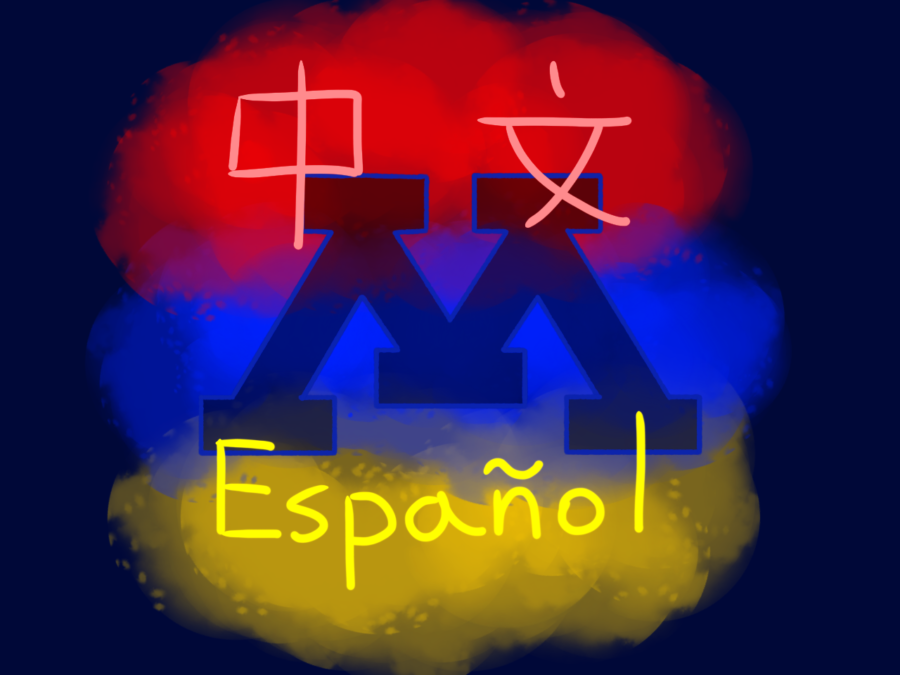The Immersion Program at MHS Provides Students with Opportunities
November 26, 2018
The Chinese and Spanish Immersion programs began at Minnetonka in 2007. These programs became available to every student enrolled at any of the elementary schools in the Minnetonka School District.
Students enter the program in kindergarten and are able to continue with it through their last year of high school. Both Excelsior and Scenic Heights offer enrollment in the Chinese Immersion program, while Clear Springs, Deephaven, Groveland and Minnewashta offer enrollment in Spanish Immersion.
From kindergarten to second grade, classes are entirely taught in either Chinese or Spanish to develop students’ primary skills in the language. Once students enter high school, options for electives in Chinese or Spanish expand. These options include electives such as Global Politics in Spanish or Conversation and Composition in Chinese, Vantage, and the International Baccalaureate Bilingual Diploma. Currently, a total of 623 students are enrolled in the program at the high school, with 469 in Spanish and 154 in Chinese.
“You get to know very unique and different perspectives. It really does open your eyes to the experiences of others and their lifestyle, history, and culture,” said Thijs Larson, ‘19, a student in Spanish Immersion.
Luca Vereecken, a senior in Chinese Immersion said “being in immersion all these years has been an amazing experience, preparing us with a priceless skill, the ability to speak Chinese, which in and of itself is already very difficult, but is also uncommon in the Western world.”
Jodi Siegel is the new Immersion Program Lead at the high school as well as a Spanish teacher at Minnetonka. She works with Spanish and Chinese Immersion students and teachers to further improve the Immersion program. Since becoming in charge of the Immersion program, Siegel says she has broadened her perspective on the Immersion program.
“I didn’t know a lot about the [Chinese] program, so it’s been really fun to see how that’s articulated and the differences. It’s been fun to be able to make an impact larger than my classroom, so ordering books for the Chinese department that I know is going to affect all of the students in the Chinese program, […] that’s really rewarding,” Siegel said.
Immersion programs are beneficial to the cognitive, social, as well as creative aspects of an individual’s growth and development. It has also enabled students in Immersion to form lifelong relationships and family-like connections with one another.
“Scientific research shows that [learning a new language] improves brain connections and it facilitates learning in other areas, particularly music and math. One of the main benefits you’re going to see is you can talk with thousands more people, millions more people with this language. It’s going to open doors in careers and relationships,” Siegel said.
This year’s graduating class will be the first group of students to graduate from the Immersion program. Although some students have decided not to continue with the program, many continue to pursue their studies, including taking electives in their second language. Others want to continue their studies in college and eventually utilize their skills in their careers.
“I do plan to continue studying Chinese in college, [but] I have not set my mind on whether I will certainly use or not use my language ability in my future profession, but it would be spectacular to be able to utilize this skill in my future job,” Vereecken said.
An additional benefit of the Immersion program is the chance for students to use their skills in a real life setting, as well as the opportunity to experience a different culture.
“I have had the opportunity to travel to some pretty amazing parts of the world. For instance, in eighth grade, I went to Panama on a class field trip. The most unique part of this experience was getting to know the people from rural Panama. It’s not something a normal tourist does, but, with the depth of language skills and knowledge immersion students have, we were able to visit local artisan workers at their homes or workplaces. This isn’t normal, but it’s what makes the Immersion program stand out,” Larson said.
Overall, the Immersion program at Minnetonka has provided students with opportunities to dive into a language, giving them invaluable experience and knowledge.






























